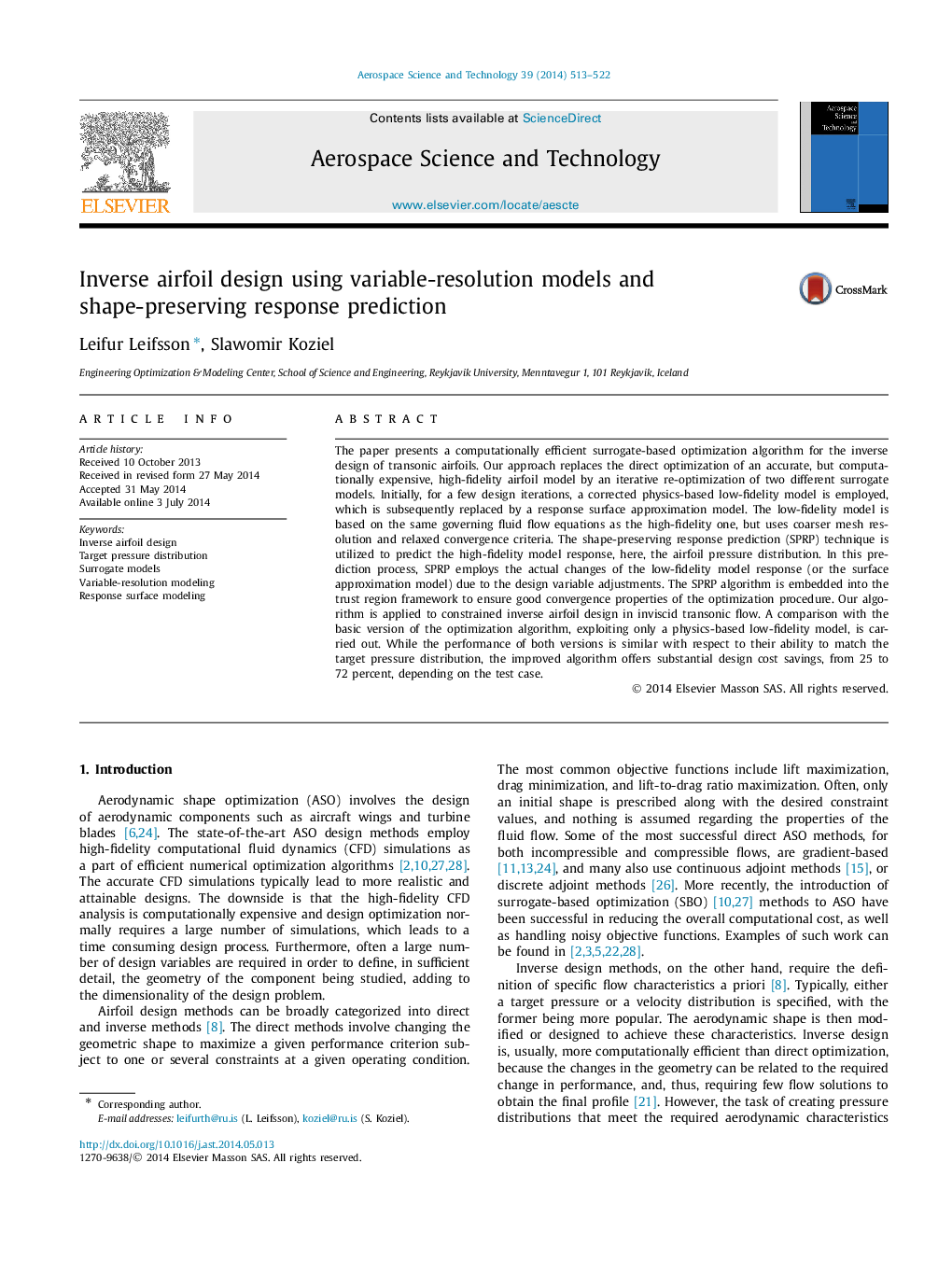| Article ID | Journal | Published Year | Pages | File Type |
|---|---|---|---|---|
| 1718003 | Aerospace Science and Technology | 2014 | 10 Pages |
The paper presents a computationally efficient surrogate-based optimization algorithm for the inverse design of transonic airfoils. Our approach replaces the direct optimization of an accurate, but computationally expensive, high-fidelity airfoil model by an iterative re-optimization of two different surrogate models. Initially, for a few design iterations, a corrected physics-based low-fidelity model is employed, which is subsequently replaced by a response surface approximation model. The low-fidelity model is based on the same governing fluid flow equations as the high-fidelity one, but uses coarser mesh resolution and relaxed convergence criteria. The shape-preserving response prediction (SPRP) technique is utilized to predict the high-fidelity model response, here, the airfoil pressure distribution. In this prediction process, SPRP employs the actual changes of the low-fidelity model response (or the surface approximation model) due to the design variable adjustments. The SPRP algorithm is embedded into the trust region framework to ensure good convergence properties of the optimization procedure. Our algorithm is applied to constrained inverse airfoil design in inviscid transonic flow. A comparison with the basic version of the optimization algorithm, exploiting only a physics-based low-fidelity model, is carried out. While the performance of both versions is similar with respect to their ability to match the target pressure distribution, the improved algorithm offers substantial design cost savings, from 25 to 72 percent, depending on the test case.
